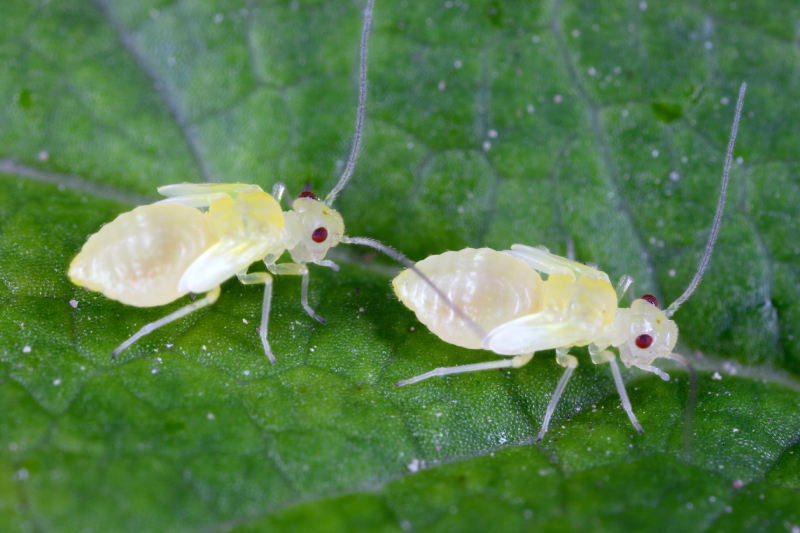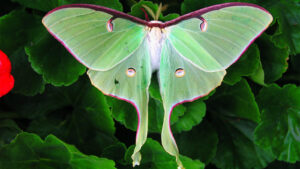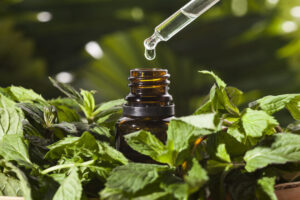
Psocid (Psocoptera) called also - booklice, barklice or barkflies. Two yellow larvae on a green leaf. High magnification.
Tiny White Bugs That Look Like Dust On Plants
The presence of tiny white bugs resembling dust on plants can be more than just an aesthetic nuisance; it can signify potential threats to the health and vitality of your beloved greenery. These minuscule invaders, often overlooked due to their diminutive size, encompass various species with distinct characteristics and impacts on plant life. In this article, we delve into the world of these elusive pests, exploring their types, signs of infestation, and effective prevention and control measures to safeguard your botanical treasures.
Types of Tiny White Bugs
Aphids
Aphids, scientifically known as Aphidoidea, are among the most common pests found in gardens and greenhouses. These soft-bodied insects typically measure between 1 to 10 millimeters in length and come in various colors, including white, green, yellow, and black. They reproduce rapidly, giving birth to live young without the need for fertilization, making populations escalate swiftly under favorable conditions.
These tiny white bugs feed on plant sap by piercing the plant tissues with their needle-like mouthparts. This feeding activity not only deprives plants of essential nutrients but also exposes them to viral diseases transmitted by aphids. Consequently, infested plants may exhibit symptoms such as stunted growth, distorted leaves, and reduced fruit or flower production.
Controlling aphid infestations necessitates a multifaceted approach. Physical methods like spraying plants with a strong stream of water can dislodge aphids from foliage, while introducing natural predators like ladybugs and lacewings can help keep their populations in check. Additionally, horticultural oils and insecticidal soaps serve as effective chemical interventions against aphids without causing harm to beneficial insects.
Whiteflies
Whiteflies, members of the Aleyrodidae family, are tiny winged insects closely related to aphids and scale insects. Despite their name, these pests often appear as small, white, moth-like creatures when disturbed, fluttering around infested plants in a cloud-like manner. Whiteflies lay their eggs on the undersides of leaves, where the nymphs develop and feed on plant sap.
The presence of whiteflies can significantly impact plant health, as their feeding weakens plants and renders them susceptible to diseases. Furthermore, whiteflies excrete a sticky substance known as honeydew, which promotes the growth of sooty mold, further compromising plant vigor and aesthetics.
Effective management of whiteflies involves disrupting their lifecycle and minimizing their population density. Techniques such as reflective mulches and yellow sticky traps can deter adult whiteflies from laying eggs, while insecticidal sprays containing neem oil or pyrethrin offer control over nymphal stages. Implementing these strategies early in the growing season can prevent whitefly populations from spiraling out of control.
Mealybugs
Mealybugs, belonging to the Pseudococcidae family, are small, soft-bodied insects covered in a powdery wax secretion that gives them a dusty appearance. These pests often congregate in concealed areas of plants, such as leaf axils and stem joints, where they feed on plant sap using their piercing-sucking mouthparts.
Identifying mealybug infestations can be challenging due to their cryptic habits, but visual cues such as white cottony masses on plant surfaces serve as telltale signs. Mealybugs not only weaken plants by draining their sap but also excrete honeydew, fostering the growth of black sooty mold, which further detracts from plant aesthetics.
Combatting mealybug infestations requires a combination of cultural, mechanical, and chemical control measures. Pruning heavily infested plant parts and disposing of them properly can reduce mealybug populations, while introducing natural predators like parasitic wasps can provide long-term suppression. In severe cases, targeted applications of insecticidal soaps or horticultural oils can effectively eradicate mealybugs while minimizing environmental impact.
Signs of Infestation
Visual Cues
One of the primary indicators of tiny white bug infestation on plants is the presence of white specks resembling dust particles on the leaves. Upon closer inspection, these specks may reveal themselves as clusters of aphids, whiteflies, or mealybugs. Additionally, the secretion of sticky honeydew by these pests can give leaves a glossy appearance, further confirming their presence.
Plant Health Indicators
Infested plants often exhibit signs of distress, such as wilting or yellowing foliage, which result from the pests’ draining of plant sap and transmission of diseases. Furthermore, the physical damage caused by their feeding can lead to distorted leaves and stunted growth, impairing the overall health and vigor of affected plants.
Environmental Factors
Understanding the environmental conditions conducive to tiny white bug infestations can aid in their prevention and management. Certain plant species may be more susceptible to infestation, while factors such as high humidity and overcrowding can exacerbate pest populations. Additionally, seasonal fluctuations in temperature and humidity can influence the prevalence of these pests, necessitating vigilance and proactive measures throughout the growing season.
Prevention and Control Measures
Cultural Practices
Adopting cultural practices that promote plant health and vigor is essential for preventing and managing tiny white bug infestations. Regularly inspecting plants for signs of pests and promptly removing any infested plant parts can prevent pest populations from spreading. Furthermore, maintaining proper watering and fertilization regimes and practicing good garden hygiene by cleaning tools and disposing of plant debris can create an inhospitable environment for pests to thrive.
Natural Remedies
Incorporating natural remedies into pest management strategies can provide effective control without the use of harsh chemicals. Introducing beneficial insects like ladybugs, lacewings, and parasitic wasps can help maintain pest populations at manageable levels. Additionally, applying neem oil or insecticidal soap to infested plants can suffocate and kill tiny white bugs while minimizing harm to beneficial insects and the environment.
Chemical Treatments
In cases where natural remedies prove insufficient, targeted chemical treatments may be necessary to eradicate stubborn pest infestations. Selective pesticides formulated specifically for the target pests can provide effective control while minimizing harm to beneficial insects and other non-target organisms. However, it’s crucial to follow label instructions carefully and apply pesticides judiciously to avoid unintended environmental consequences.
Conclusion
Tiny white bugs that resemble dust on plants may seem inconsequential at first glance, but their presence can signify significant threats to plant health and vitality. By familiarizing yourself with the types of pests that commonly infest plants, recognizing the signs of infestation, and implementing proactive prevention and control measures, you can safeguard your botanical treasures from these insidious invaders. Remember, early detection and intervention are key to preserving the beauty and abundance of your garden for years to come.





